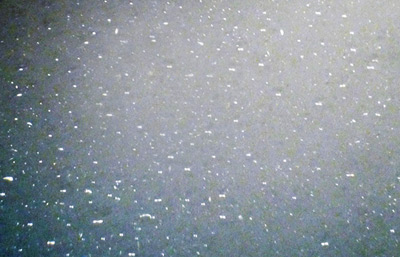Among the myriad mysterious terms that might give neophyte marine aquarists a migraine (okay, I’ll stop with the gratuitous alliteration now) is “nutrient export.” What does this term mean? Is it just a fancy way of saying “filtration”? Well, not exactly, though certain forms of filtration do play a part.
For our purposes, nutrient export can be defined as the elimination of substances that (directly or upon decomposition) degrade water quality and fuel the growth of undesirable algae in marine aquarium systems. So, let’s take a look at some of the common methods we rely on for nutrient export, including some that only do the job partway:
Mechanical filtration
First and foremost, it’s important to understand that mechanical filtration—the straining of particulate matter from the water—is not, in and of itself, a form of nutrient export. Uneaten food, fish poop, and other detritus trapped in a mechanical-filtration medium (e.g., floss, sponge, or a sock) with water flowing through it will continue to break down and release dissolved nutrients into the system. It’s not until the hobbyist rinses or replaces the medium that the nutrients are actually exported.
Water changes
Provided your makeup water isn’t nutrient-rich (which it shouldn’t be if it’s processed through an RO/DI unit or otherwise purified), water changes are the most reliable method of nutrient export. Water changes assist in this vital process in two ways:
- The elimination of all the dissolved pollutants present in the water that gets siphoned out.
- The removal of particulate waste by vacuuming before it has a chance to break down and release dissolved pollutants.
Protein skimming
Your protein skimmer does a great job of exporting dissolved organic compounds, which bond with air bubbles in the reaction chamber, creating a foam that rises up and collapses in the collection cup at the top of the unit. The resultant skimmate is then emptied into the sink to completely eliminate it from the system.
Algal filtration
Algae, for example, turf forms grown on dedicated algae scrubbers or macroalgae grown in a refugium or display tank, aid in nutrient export by taking up nitrate and phosphate. Technically speaking, the nutrients are merely sequestered in the tissues of the algae. The actual export occurs when the hobbyist harvests and removes some of the algae from the system.
Chemical filtration media
Chemical filtrants—from activated carbon to various media formulated to remove particular substances or combinations thereof (for example Poly Filter)—can be another powerful nutrient-export ally. Note, however, that these must be used in accordance with the manufacturer’s recommendations for best results and that some can leach adsorbed compounds back into the water if not replaced in a timely manner.



